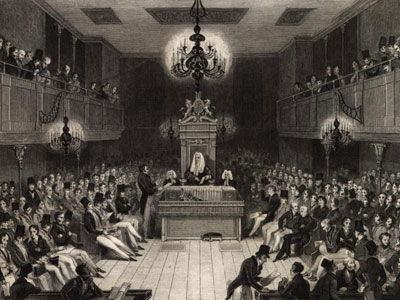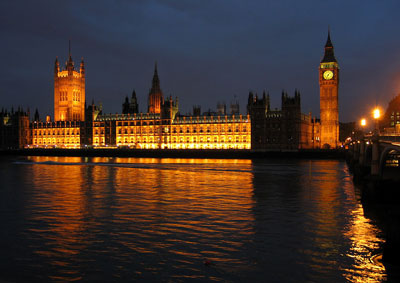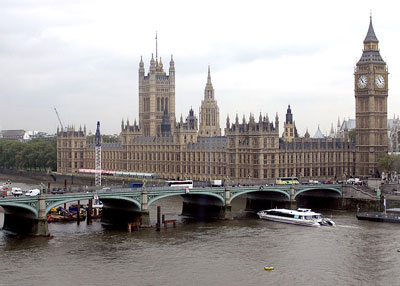
Source: British House of Commons 1834, Wikimedia
The House of Commons, however, is elected from the popular vote of the people. Currently there are 650 members of Parliament, also referred to as MPs. Elections for seats in the House of Commons are held every 5 years. Members hold their seats for those five years until Parliament is dissolved. In order to be a Member of Parliament, one doesn't have to be a member of a political party, but most candidates who are elected are party members. If a MP (Member of Parliament) dies, resigns, or is appointed to the House of Lords, then a new MP must be elected to fill their position.

Source: British House of Commons 1834, Wikimedia
The two Houses meet in separate chambers in Westminster Palace.

Source: Palace of Westminster at Night, Andrew Dunn, Wikimedia
Of the three components of the British Parliament, the House of Commons hold the most power and members of the House of Lords cannot vote in elections for members of the House of Commons.

Source: Westminster Bridge, River Thames, London, England, Arpingstone, Wikimedia
The Palace of Westminster, also known as the Houses of Parliament or Westminster Palace, is the meeting place of the two houses of the Parliament of the United Kingdom—the House of Lords and the House of Commons. It lies on the north bank of the River Thames in the heart of the London borough of the City of Westminster, close to the historic Westminster Abbey and the government buildings of Whitehall and Downing Street. The name may refer to either of two structures: the Old Palace, a medieval building complex most of which was destroyed in 1834, or its replacement New Palace that stands today; it has retained its original style and status as a royal residence for ceremonial purposes.
Now, you are going to compare the structure and functions of the Roman Republic to British Parliament. In your notes, answer the following questions: What are two ways in which the Roman Republic and British Parliament are similar? What are some differences between the two types of government? Why do you think in Rome's republic, the monarch was seen as bad, but in British Parliament, a monarch is a component to its system?